Ossuaries Around the World- Intriguing Bone Houses to Visit
Purchases made through links earn us a small commission, at no extra cost to you.
Ossuaries are macabre yet fascinating sites that are more than just collections of bones; they are historical and artistic treasures. These bone-filled sanctuaries offer a unique lens through which we can view humanity’s relationship with death and remembrance.
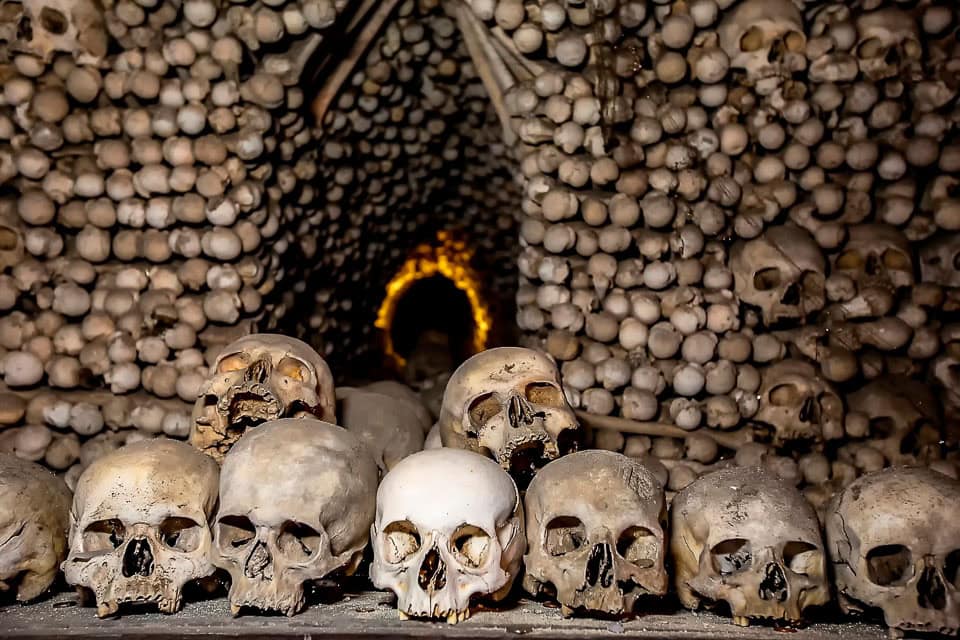
Here are some intriguing and eerie ossuaries around the world you can visit, but first a brief explanation of what ossuaries are and how they came to be.
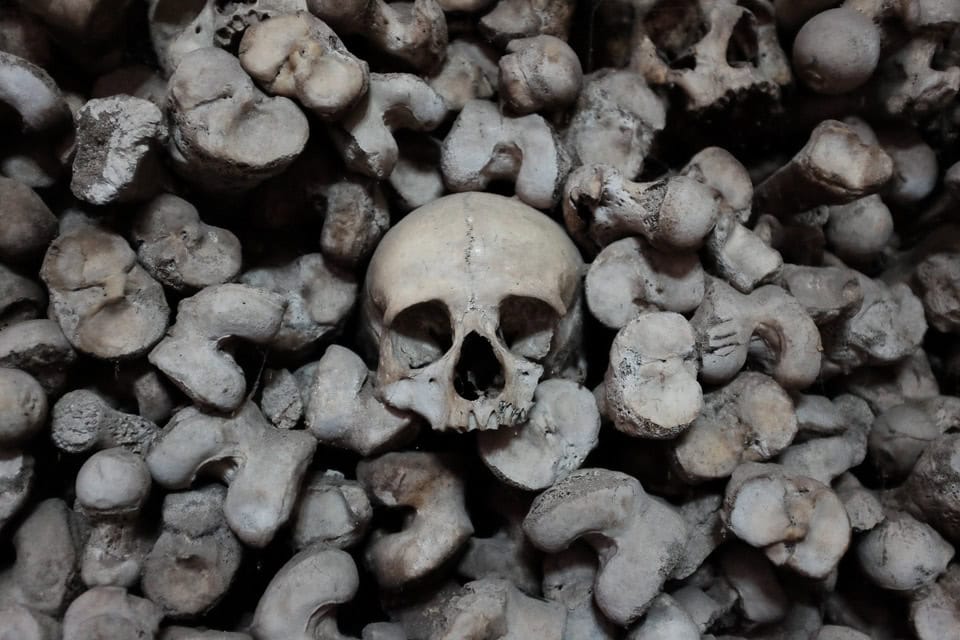
In This Post
What is an Ossuary?
An ossuary is a chamber that is used for storing skeletal remains. They were typically used in ancient and medieval times where cemeteries were overcrowded. After a body was buried for some time and had decomposed, it was exhumed, the bones were cleaned and then moved to an ossuary.
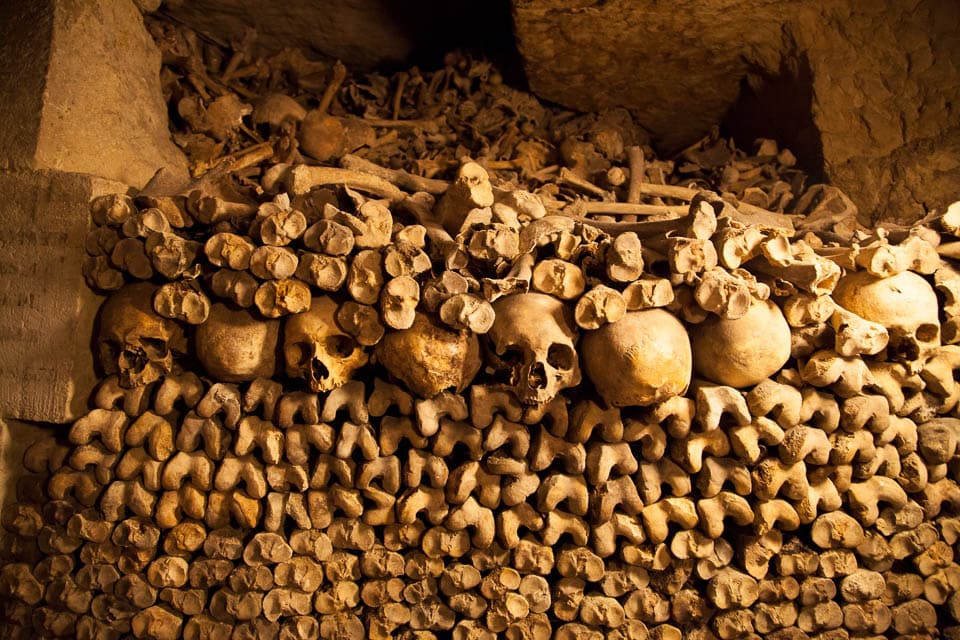
While this practice of moving bones to an ossuary makes more space in cemeteries, ossuaries are also used for spiritual reasons in some religions, such as the Catholic and Orthodox faiths.
Ossuaries can vary in appearance ranging from crypts and catacombs with piles of bones to churches and chambers with artistically arranged skeletons. They are sometimes referred to as bone houses or charnel houses. Ossuaries can also be decorative containers that fit the bones of several people.
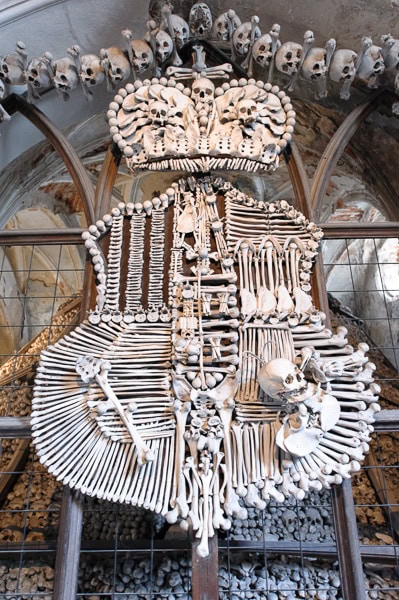
Famous Ossuaries Around the World
There are many ossuaries in Europe, but you’ll also find them in other parts of the world including Peru, Egypt, Cambodia, and Iran.
Here are some interesting ossuaries, or bone houses, that you can visit around the world.
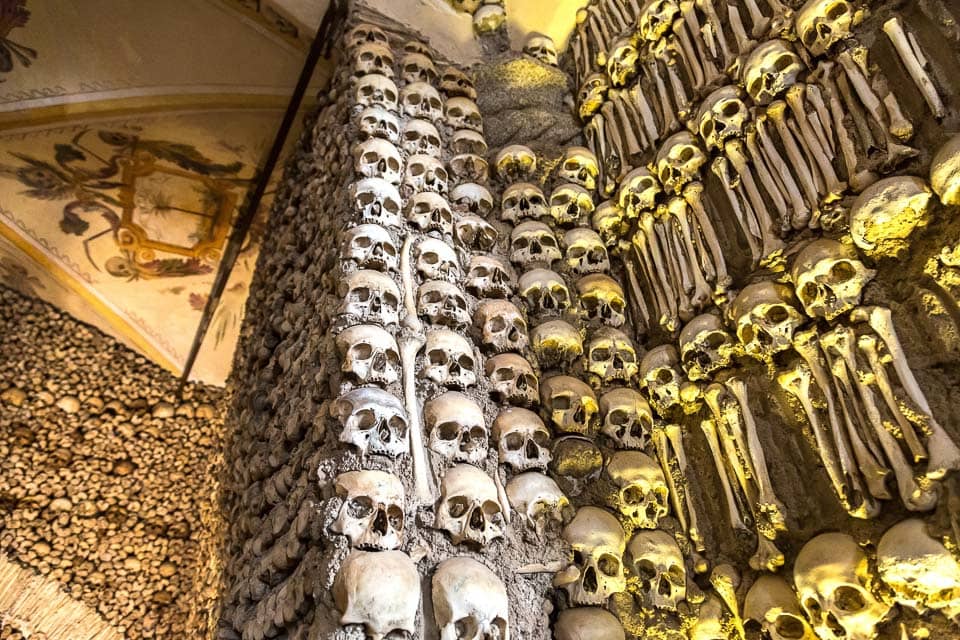
Paris Catacombs
Location: Paris, France
The Paris Catacombs are the world’s largest ossuary, with the skeletal remains of over six million people stacked along kilometres of underground tunnels. These former limestone quarry tunnels were converted into an ossuary when Paris’ cemeteries were ordered to be closed in the late 18th century because of unsanitary, overcrowded conditions.

The bones were at first dumped and piled into the passageways, but the skulls, pelvises, and leg bones have since been neatly arranged into rows of floor-to-ceiling designs. There are even some old cemetery decorations adding visual interest to the bone displays.
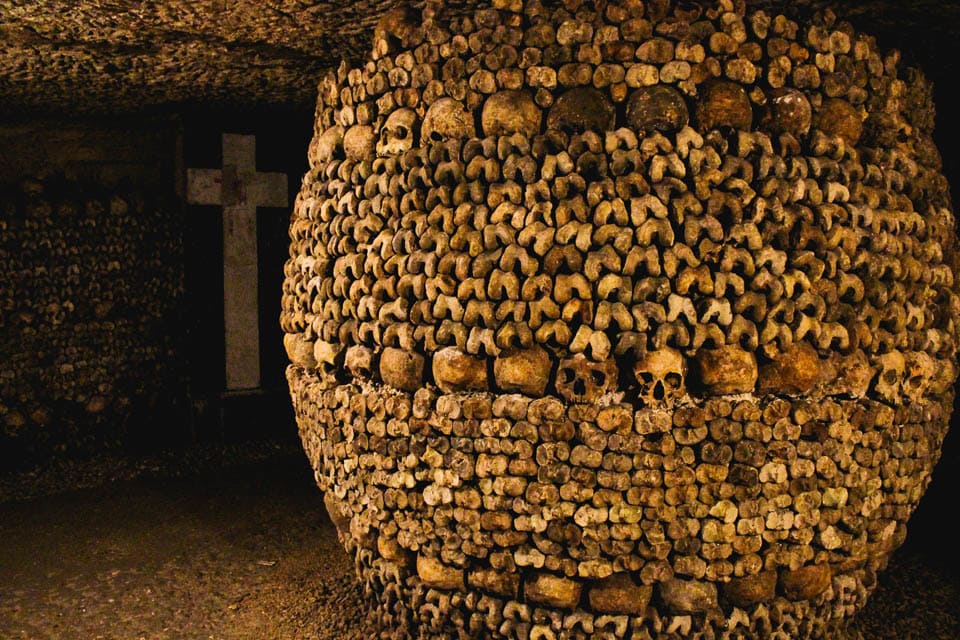
Brno Ossuary
Location: Brno, Czechia
The second largest ossuary in Europe is the Brno Ossuary, holding the remains of about 50,000 people below the Church of St. James. It was established in the 17th century but wasn’t rediscovered until 2001 during a land survey.
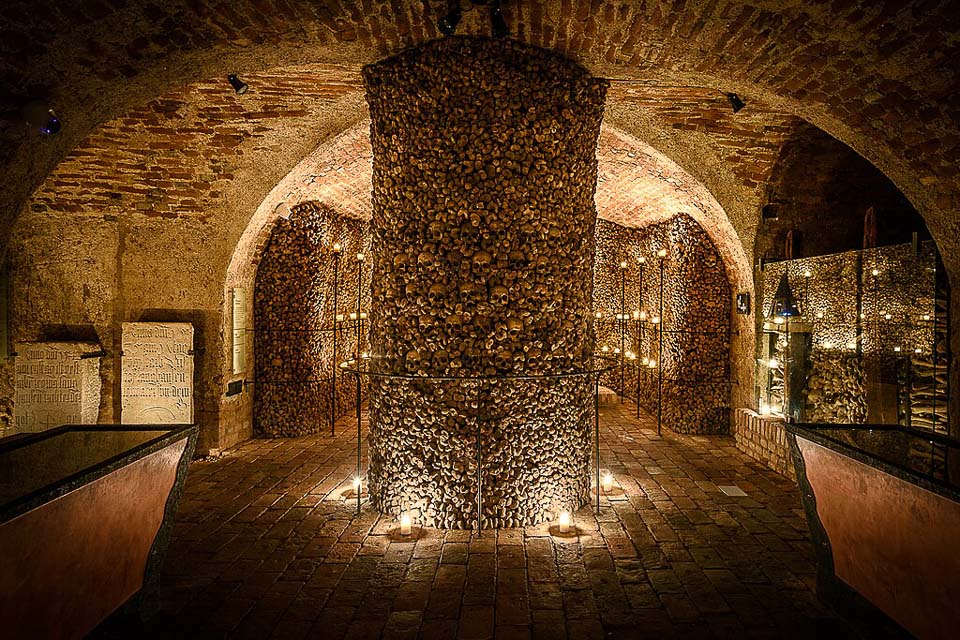
After being restored, the Brno Ossuary was opened to visitors in 2012. It features walls lined with bones, piles of skulls, and thick columns of stacked bones. Music composed by a local musician especially for the ossuary adds to the unique atmosphere. Even though the ossuary has a large amount of bones, there are only three burial chambers so it takes about 15 minutes to visit.
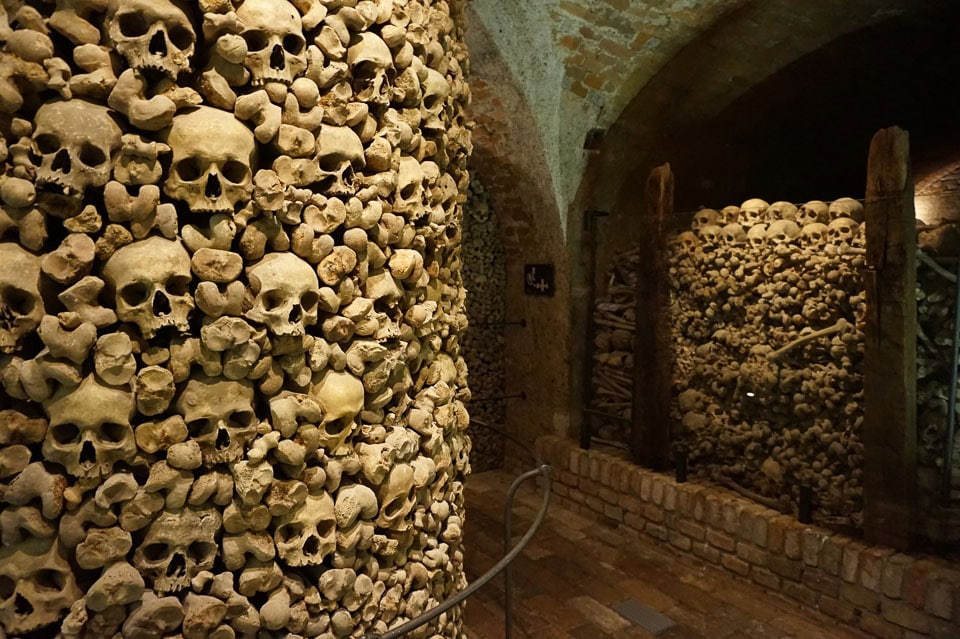
Sedlec Ossuary Bone Church
Location: Kutna Hora, Czechia
In a basement chapel below the Cemetery Church of All Saints in Kutna Hora is Czechia’s famous bone church, the Sedlec Ossuary. Bones from the church’s cemetery were moved into the chapel starting in the early 15th century but were left in piles until 1870 when woodcarver František Rint was commissioned to artistically organize the bones.
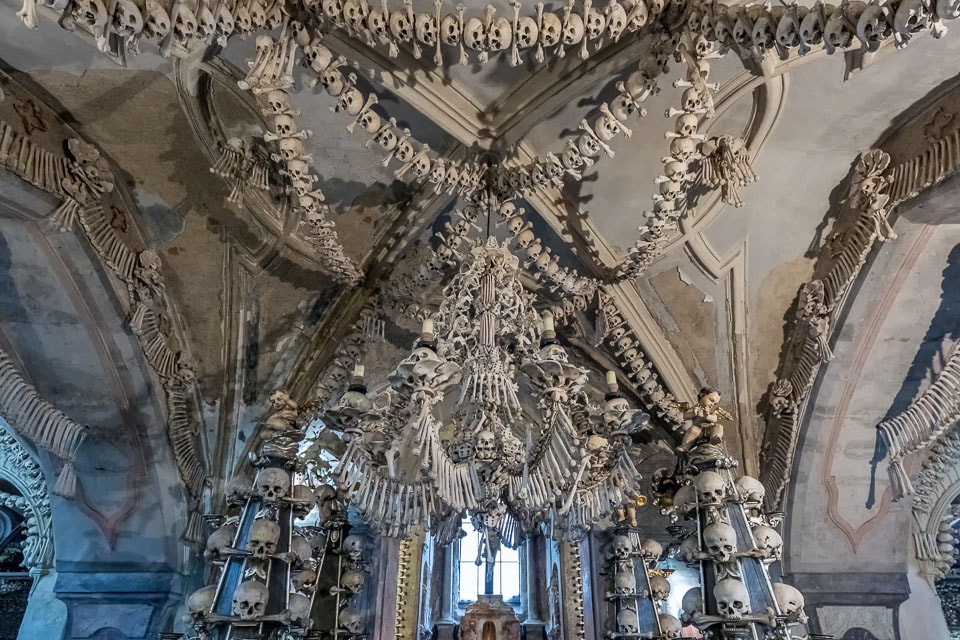
Rint used the bones of about 40,000 people to create intricate designs and sculptures including garlands and coats of arms. The centrepiece of the bone church is a large chandelier made from almost every bone in the human body.
Évora Chapel of Bones
Location: Évora, Portugal
The Capela dos Ossos, or Chapel of Bones, in Évora was built by Franciscan monks to convey the impermanence of life. A chilling inscription at the entrance reads, “We bones that are here for yours await,” reinforcing the chapel’s theme.
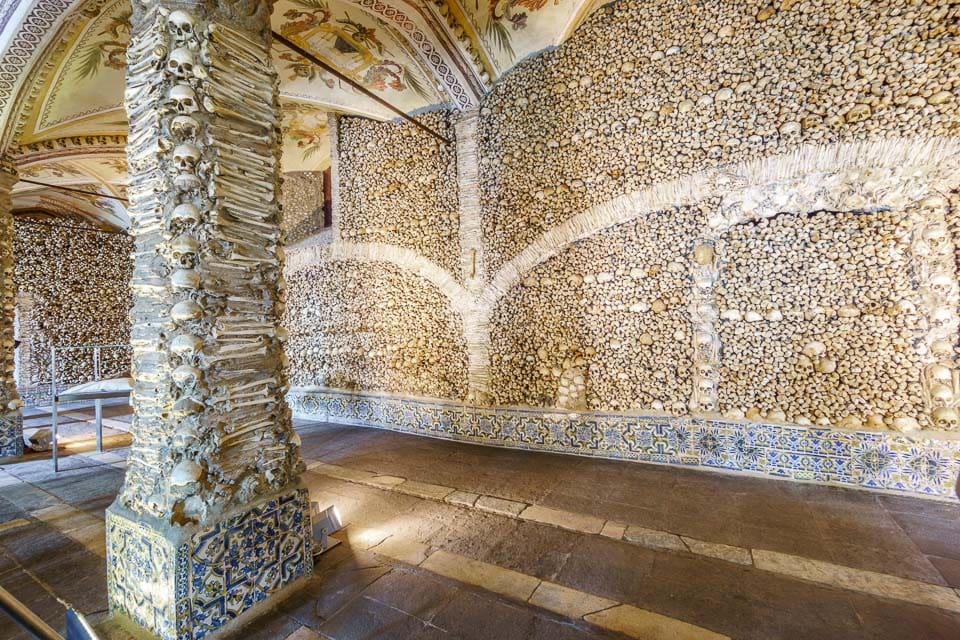
The chapel’s interior walls and pillars are covered with carefully arranged bones exhumed from the city’s medieval cemeteries. Even the ceiling is decorated with skeletal remains and painted with death motifs. It’s estimated that the bones and skulls of 5,000 corpses were used to decorate the chapel.
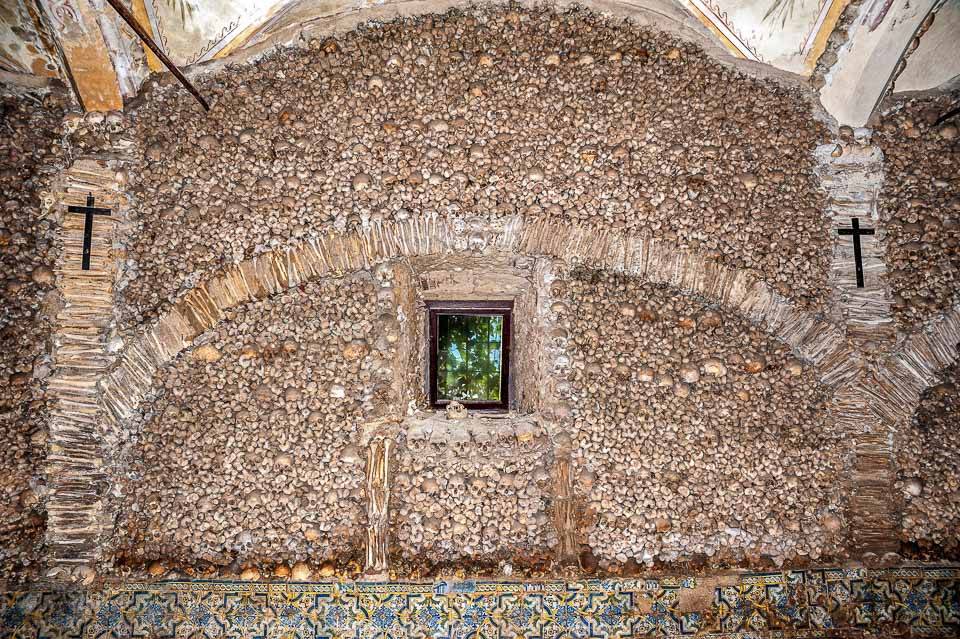
Skull Chapel
Location: Kudowa-Zdrój, Poland
Poland’s Skull Chapel is a small Baroque chapel located in Kudowa-Zdrój near the Poland-Czechia border.
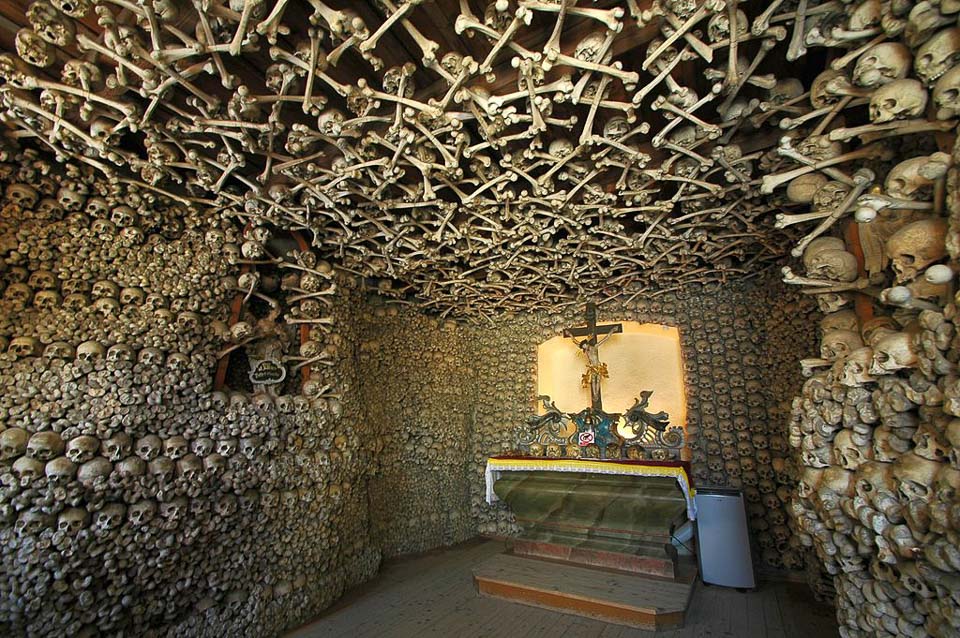
Constructed by a local priest in 1776, the chapel is adorned with the skeletal remains of over 3,000 individuals, with an additional 21,000 bones interred in the crypt beneath. These bones, meticulously arranged on the walls and ceiling, were gathered from victims of wars, famines, and epidemics in the region.
Douaumont Ossuary
Location: Douaumont-Vaux, France
The Douaumont Ossuary, within France’s Verdun battlefield, is a memorial preserving the skeletal remains of French and German soldiers who died during the Battle of Verdun in World War I.
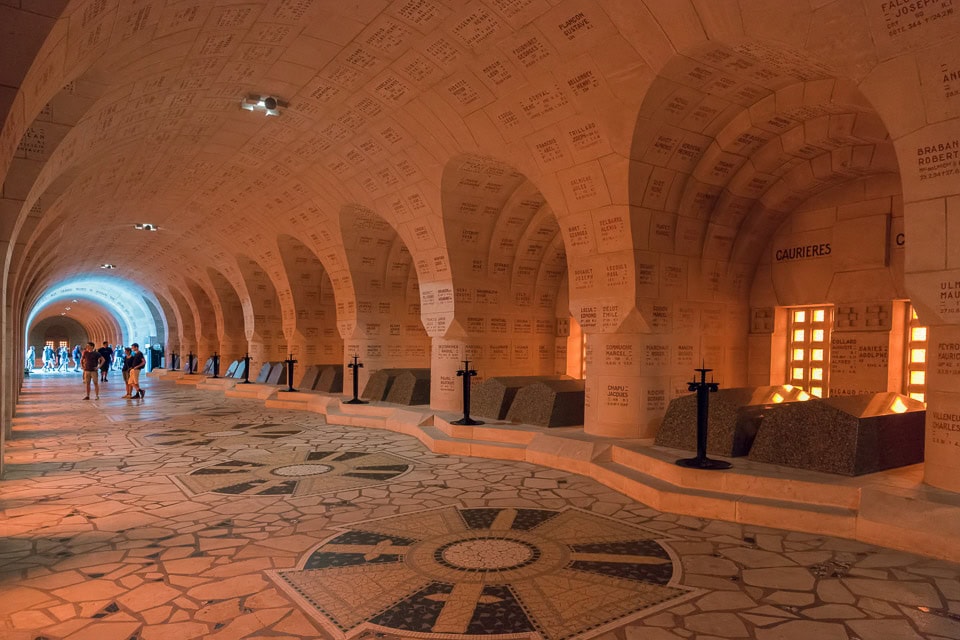
The ossuary contains 46 vaults representing each main section of the battlefield. Inside are the bones of 130,000 unidentified soldiers that can be viewed through windows. The memorial ossuary also includes a museum and theatre for learning more about the battle. Nearby is the National Cemetery of Fleury-devant-Douaumont.
Capuchin Crypt
Location: Rome, Italy
The Capuchin Crypt in Rome is an ossuary below the church of Santa Maria della Concezione dei Cappuccini with the bones of 4,000 Capuchin friars who died between 1528 and 1870.
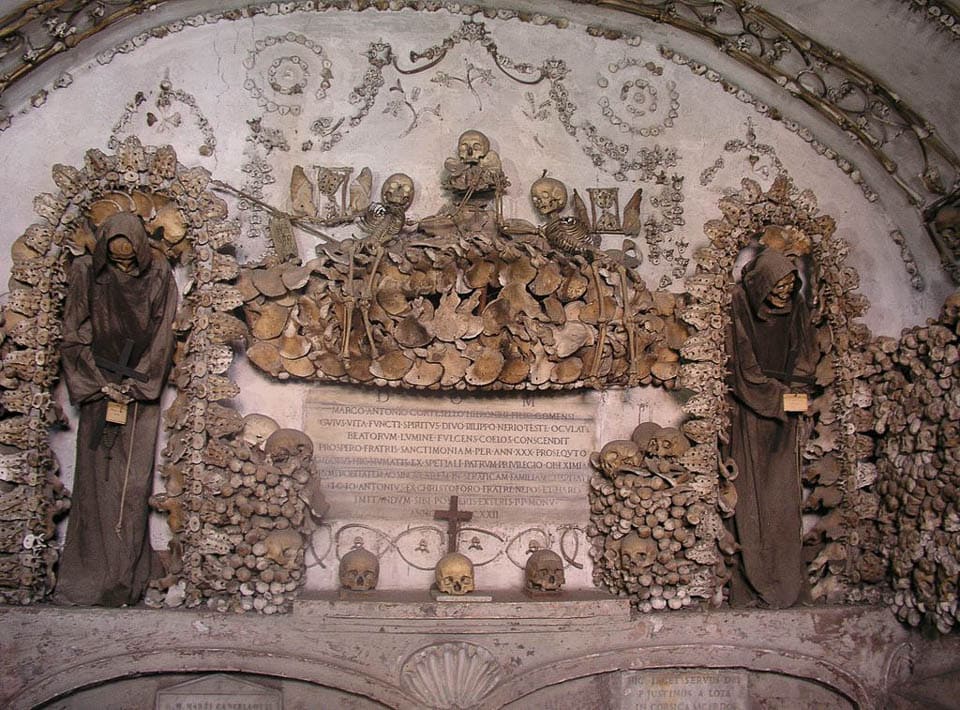
There are six rooms in the crypt, five of which are decorated with human bones as a way to remind the monks that death is inevitable. There’s a crypt of skulls, a crypt of pelvises, and a crypt of leg bones. One of the most unique displays is a skeleton holding a scythe and scales made entirely out of bones.
Hallstatt Charnel House
Location: Hallstatt, Austria
The beautiful Austrian village of Hallstatt is home to a small bone house located inside St. Michael’s chapel.
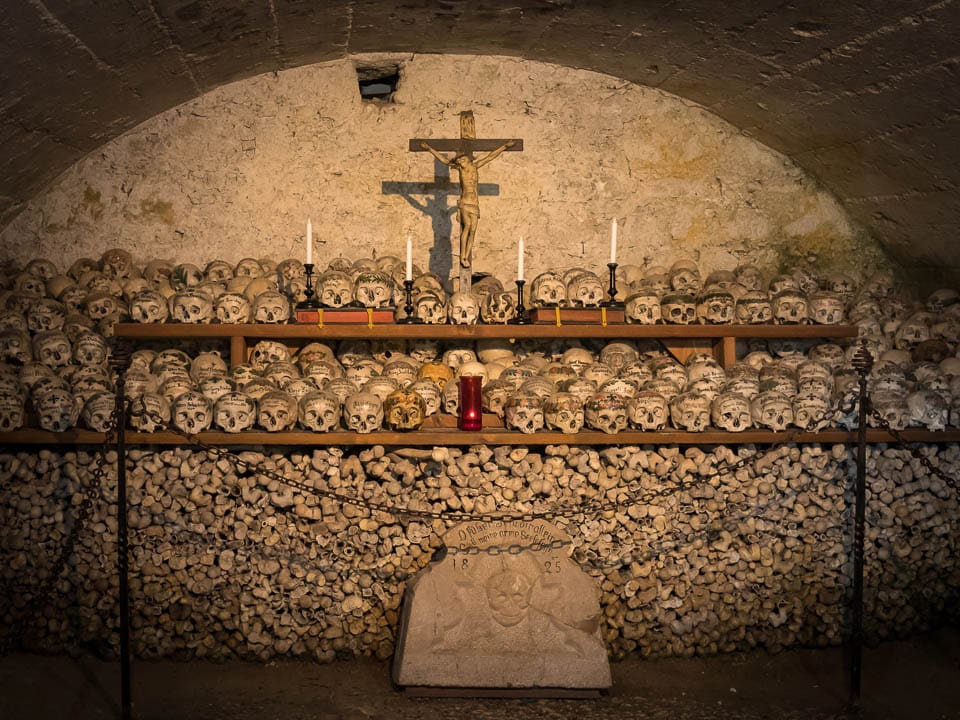
In the bone house, there are about 600 skulls that are lovingly painted with the names of the dead and symbolic images of plants and flowers. The skeletal remains were disinterred after 10 years of burial, then the skulls were cleaned, painted, and displayed in the bone house. It’s unknown why this tradition developed, but it’s believed to have started in the 18th century, with most of the skulls in the bone house being painted during the 19th century.
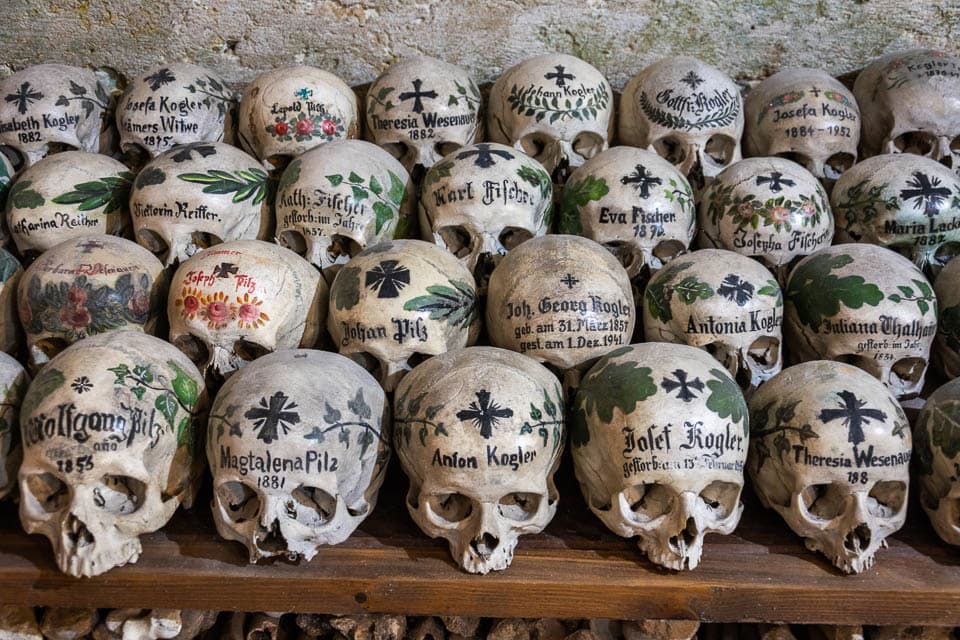
Catacombs of Lima
Location: Lima, Peru
The catacombs of Lima, located beneath the Convent of San Francisco in the historic centre of the city, were established in the 16th century and served as burial grounds until the early 19th century.
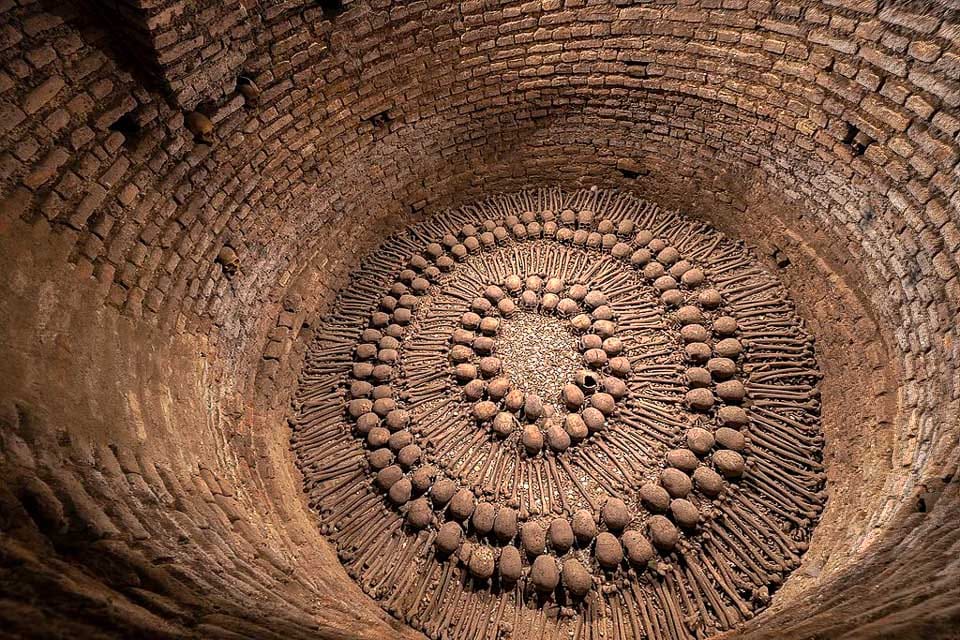
The underground crypts, constructed with brick and mortar, are estimated to house the remains of around 25,000 individuals. Visitors can explore the passageways and vaults to view the meticulously arranged bones. There are even wells up to 10 meters deep with skeletal remains inside.
Final Words
Blending the sacred and the sombre, ossuaries offer insights into the cultural practices surrounding death and the preservation of remains. At these unique sites, visitors can reflect on the transient nature of life and the commonality of death, while also admiring a special and strange form of artistic expression.
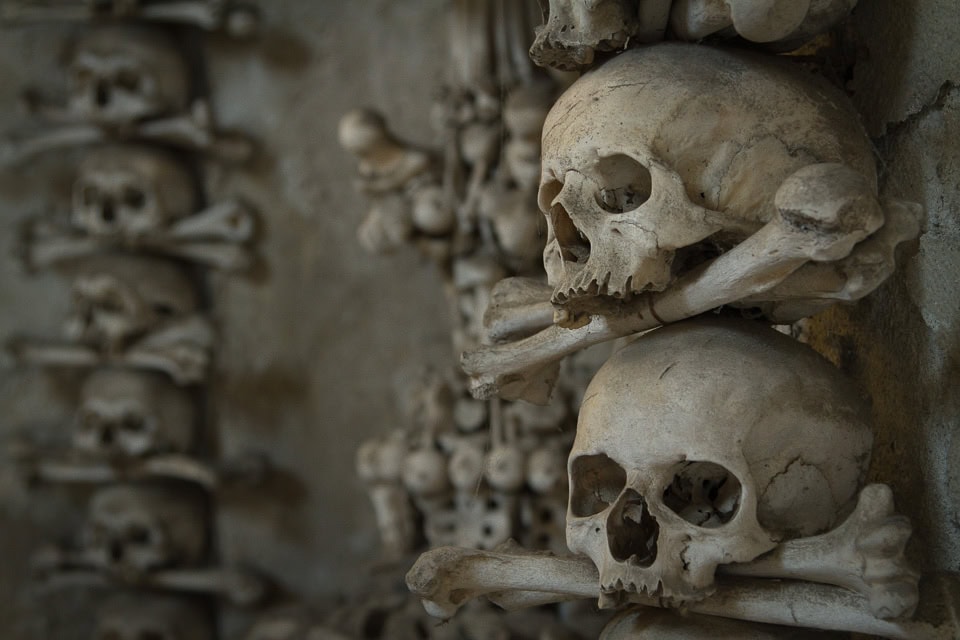
More Burial Places to Visit Around the World
- Père Lachaise Cemetery- Paris’ Legendary Necropolis
- Famous People Buried in Westminster Abbey
- Panthéon of Paris- A Mausoleum for France’s National Heroes
- Highgate Cemetery Burials- Famous Graves in Highgate Cemetery
- Cemeteries in Boston- Historic Boston Cemeteries to Visit
